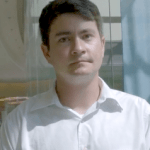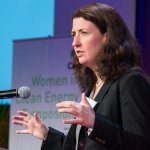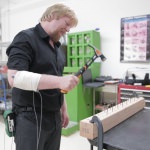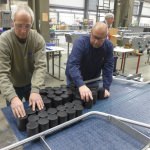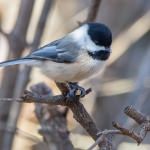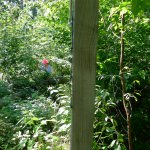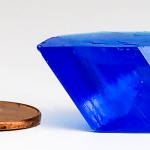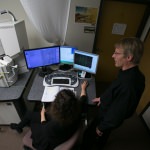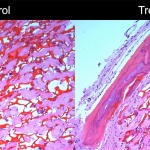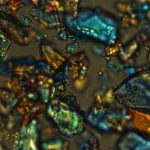Category Science & Technology
Video: These crystals are growing up so fast
Middle, high school and home school students will compete in the Wisconsin Crystal Growing contest, from March 1 to April 30. Read More
App offers fast track for inserting photos into medical record
Two UW radiologists founded ImageMoverMD, a Middleton business that streamlines image processing in hospitals and clinics, and enables quick consultations between specialists. Read More
Citizen observations help inform Arboretum’s annual account of spring
Both official and unofficial observations curated by UW–Madison Arboretum staff suggest that the mild winter of 2017 is leading to earlier spring activity in some plants and animals. Read More
From rocks in Colorado, evidence of a ‘chaotic solar system’
New evidence confirms a critical theory of how the planets in our solar system behave in their orbits around the sun, producing big changes in Earth's climate. Read More
UW helps schools update approach to science education
Each year, Biocore sends as many as 50 other science outreach ambassadors to Wisconsin schools to teach the students about science, often using Wisconsin Fast Plants. Read More
Striking the right balance: UW–Madison engineers prove new hammer doesn’t strain
University of Wisconsin–Madison industrial engineers recently helped Fiskars test how effective its new shock-absorbing hammer is at helping users avoid overuse injuries. Read More
UW offering computer user experience design certificate
Given the value of improving interactions between humans and computers in a digitized world, user experience design practitioners are increasingly in demand. Read More
UW-Madison program conveys progress to Oconto manufacturer
Conveyor maker Nercon's leaders learned new productivity techniques from UW–Madison's Engineering Professional Development department. Read More
Forest ‘islands’ offer refuge to wintering birds
UW-Madison researchers studying forest microclimates show that these refuges may mean the difference between life and death for the black-capped chickadee and its kin. Read More
Beyond eating: Indirectly, deer change the landscape
Scientists are studying how the animal’s behaviors affect the wildflowers and other herbs that blanket the forest floor. Read More
High school and middle school students crystallize science
From March 1 to April 30, participating students will work to grow large and high quality crystals from safe, common materials. Read More
UW sleep research high-resolution images show how the brain resets during sleep
Drs. Cirelli, foreground, and Tononi, right, study an image of a mouse brain taken by a scanning electron microscope, left. Thousands of these images… Read More
Search committee chooses 3 finalists for UW Arboretum director
Widely recognized as the site of historic research in ecological restoration, the Arboretum includes the oldest and most varied collection of restored ecological communities in the world. Read More
Contest seeks more amazing science images
To recognize the visual and exploratory value of scientific imagery, the 7th annual Cool Science Image Contest is soliciting the best images from members of the UW–Madison community. Read More




